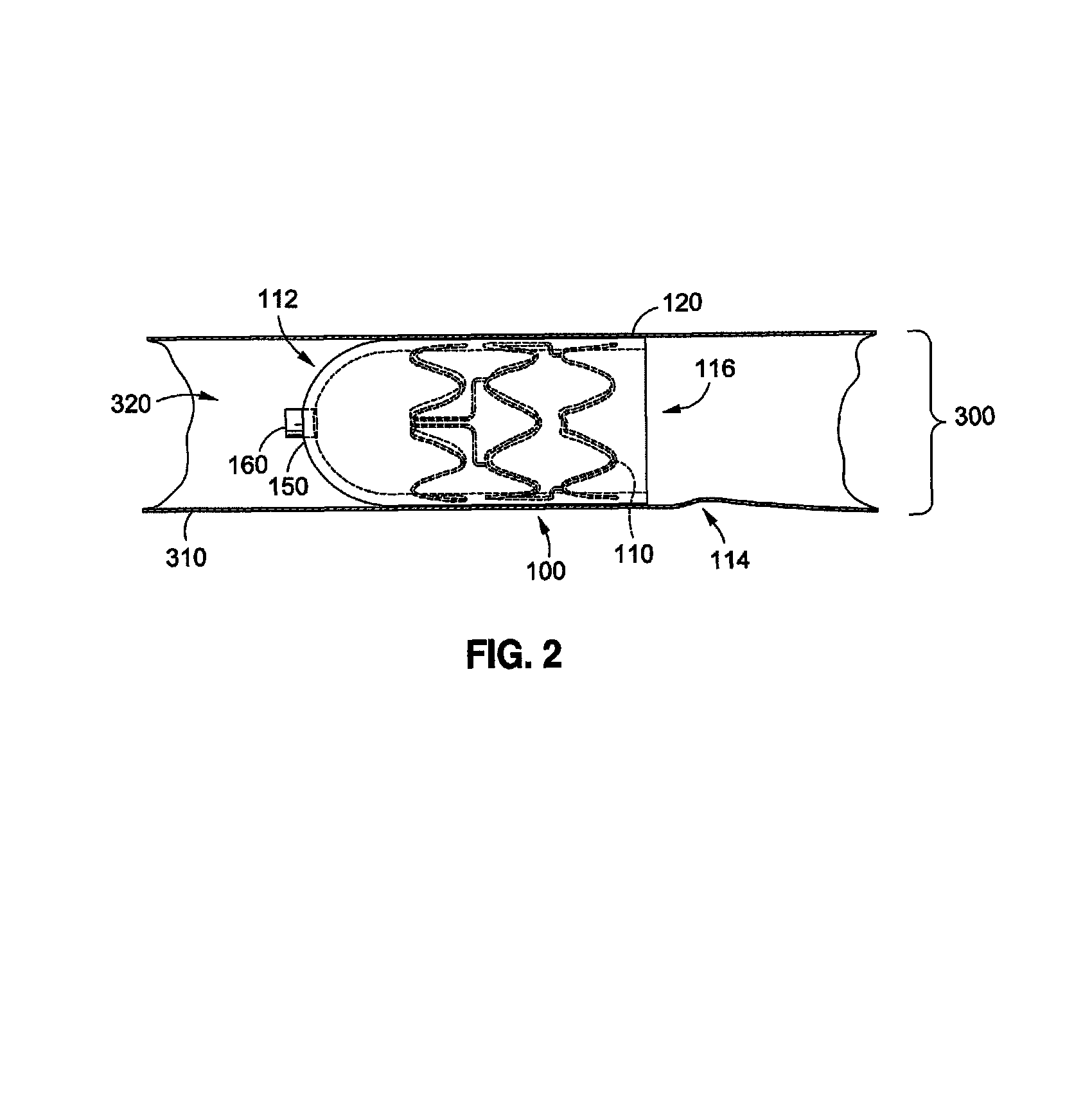Methods and apparatus for rapid endovascular vessel occlusion and blood flow interruption
a technology of endovascular vessels and apparatus, applied in the field of apparatus and methods for acute occlusion of vessels, can solve the problems of balloon occlusion devices suffering from limitations affecting their ease of use and safety, recurrence of lesion, treatment failure, etc., and achieve the effect of promoting thrombosis
- Summary
- Abstract
- Description
- Claims
- Application Information
AI Technical Summary
Benefits of technology
Problems solved by technology
Method used
Image
Examples
Embodiment Construction
[0046]FIG. 1 is a radiograph illustrating a vessel occlusion using prior art methods and apparatus. The left panel of FIG. 1 shows a angiography image of a giant aneurysm prior to repair by balloon occlusion. The right panel is an image taken after the aneurysm had been occluded with the use of a prior art detachable balloon 10, which was further stabilized by the placement of microcoils 20. As discussed herein, these prior art methods suffer from a number of drawbacks and limitations that affect their general usefulness.
[0047]FIG. 2 illustrates an embodiment of a vessel occluding device 100 of the present disclosure. As used herein, the terms “occluding” and “occlusion” refer interchangeably to partial or completion blocking of the body cavity into which the device is deployed.
[0048]In some embodiments the device 100 comprises a scaffold structure formed by an expandable member 110. In some embodiments the expandable member 110 conveniently comprises an expandable stent. The expand...
PUM
 Login to View More
Login to View More Abstract
Description
Claims
Application Information
 Login to View More
Login to View More - R&D
- Intellectual Property
- Life Sciences
- Materials
- Tech Scout
- Unparalleled Data Quality
- Higher Quality Content
- 60% Fewer Hallucinations
Browse by: Latest US Patents, China's latest patents, Technical Efficacy Thesaurus, Application Domain, Technology Topic, Popular Technical Reports.
© 2025 PatSnap. All rights reserved.Legal|Privacy policy|Modern Slavery Act Transparency Statement|Sitemap|About US| Contact US: help@patsnap.com



